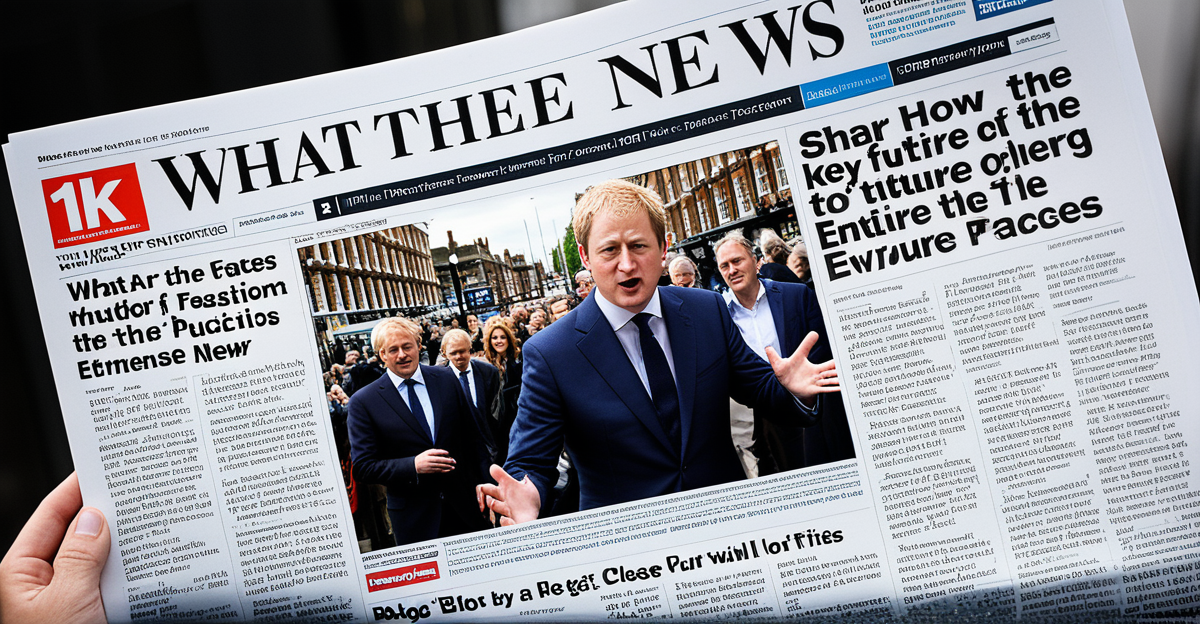Major Regulatory Changes Influencing UK News
Recent shifts in media regulation in the UK have been largely driven by Ofcom’s evolving role and new government policies aimed at balancing press freedom with accountability. Ofcom now oversees broader aspects of UK media law, extending beyond broadcasting to some elements of online content regulation. This expansion has sparked debate regarding its potential to both safeguard journalistic standards and risk encroaching on press freedom.
New press freedom laws have sought to reinforce protections for journalistic sources and editorial independence. However, these measures come alongside stricter content oversight obligations for news organisations, especially regarding accuracy and harmful content. The tension between regulation and liberty remains a critical point highlighted by media experts. They emphasize that while stronger regulation can enhance trust and responsibility, excessive constraints could stifle investigative journalism and diversity within the UK media landscape.
Also to read : What Are the Key Changes in UK Environmental Policies?
Industry commentary frequently points to the need for clear, proportionate regulation that supports innovation while upholding ethical standards. As UK media law continues to adapt, news outlets face the challenge of complying with regulatory demands without compromising their essential role as watchdogs and informers in a vibrant democratic society.
Digital Transformation and Innovation in Newsrooms
The adoption of digital journalism tools is reshaping newsrooms across the UK. Modern newsroom technology now includes automated content generation, data analytics, and audience engagement platforms. These innovations enable journalists to deliver timely, customised stories while maintaining journalistic integrity.
Also to discover : Explore fun and effective arabic courses for children today!
Partnerships between established news organisations and technology firms have accelerated this transformation. For example, collaborations facilitate advanced artificial intelligence and machine learning applications, streamlining news production and enhancing content relevance. Such alliances demonstrate how traditional media can leverage digital expertise to stay competitive.
A significant focus lies on mobile, social, and multimedia content. Audiences increasingly consume news via smartphones and social platforms, demanding interactive videos, infographics, and real-time updates. Newsrooms are adapting by prioritising mobile-first approaches, integrating social media metrics, and experimenting with new formats like podcasts and live streams. This digital shift not only widens reach but also strengthens audience engagement.
Overall, innovation in media is pivotal. It empowers news organisations to meet evolving preferences while addressing challenges like content saturation. By harnessing cutting-edge technology, newsrooms can produce diverse, accessible, and impactful journalism for the digital age.
Media Mergers and Market Consolidation
In recent years, the UK has witnessed a surge in news industry mergers and media consolidation, reshaping the landscape of leading news organisations. Notable corporate acquisitions have combined multiple outlets under large conglomerates, aiming to achieve economies of scale and stronger market positions. However, these mergers often raise concerns about reduced editorial independence and content diversity. Consolidation can concentrate decision-making power, potentially limiting the range of perspectives and investigative reporting available to audiences.
For example, several high-profile acquisitions have integrated historically independent titles into expansive media groups. While this can provide financial stability and access to shared newsroom technology, critics argue it may also lead to homogenised content driven by commercial priorities rather than public interest. Independent outlets continue to play a crucial role in maintaining plurality, yet they face increasing pressure amid consolidation trends.
Industry experts emphasize that safeguarding press freedom requires vigilant regulation of mergers under UK media law to prevent excessive concentration. Maintaining a competitive, diverse market encourages innovation and upholds democratic values by ensuring a multiplicity of voices in the media. As media consolidation advances, balancing commercial viability with editorial variety remains a pivotal challenge for the news ecosystem.
Addressing Disinformation and Trust in Journalism
Disinformation has become a pervasive challenge for UK news, directly impacting news trustworthiness. Rising instances of fake news complicate audiences’ ability to discern factual reporting. Media organisations respond by strengthening editorial standards and investing in fact-checking initiatives. Fact-checking teams rigorously verify claims before publication, helping to filter out inaccuracies and uphold reliable journalism.
How do newsrooms maintain trust amidst disinformation? They employ transparent sourcing and provide context to stories, reinforcing accountability. Active collaboration with independent fact-checkers enhances credibility, supported by clear corrections policies. This multifaceted approach aims to rebuild and preserve public trust in UK media.
Public surveys reveal fluctuating confidence levels in news outlets, reflecting concerns about misinformation proliferation. To combat this, media groups increasingly utilise technology to detect and flag false content swiftly across online platforms. Algorithmic tools complement human editorial oversight, ensuring timely intervention against deceptive narratives.
Ultimately, maintaining trust requires a robust commitment to factual accuracy and transparency. By addressing disinformation proactively, UK news organisations work to protect their reputations and provide audiences with trustworthy, informative content amid a complex information environment.
Changing Audience Behaviour and Content Consumption
Audience habits in the UK are undergoing significant shifts, profoundly influencing news organisations’ strategies. Recent media surveys reveal a steady decline in traditional print readership, replaced increasingly by digital readership across diverse platforms. People now consume news predominantly via smartphones, tablets, and online platforms, often favouring brief, on-demand content.
How has this affected news consumption trends? The shorter attention spans and preference for instant updates encourage newsrooms to focus on mobile-friendly formats, incorporating interactive elements such as videos and infographics. Social media plays a crucial role, acting as both a distribution channel and a primary point of engagement. Platforms like Twitter and Instagram help news organisations reach younger demographics and stimulate real-time conversations.
Streaming and podcasting also contribute to evolving habits, offering users tailored content that fits busy lifestyles. News outlets adapt by producing more multimedia content accessible anytime and anywhere. Importantly, these changes demand innovation in media to stay relevant.
The evolving landscape presents challenges and opportunities: engaging diverse audiences while maintaining informational depth. Understanding and responding to such audience behaviour is essential for sustainable digital journalism growth and long-term connection with readers in the digital era.






